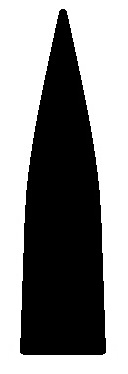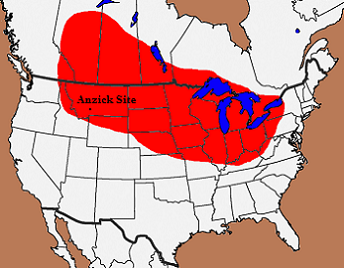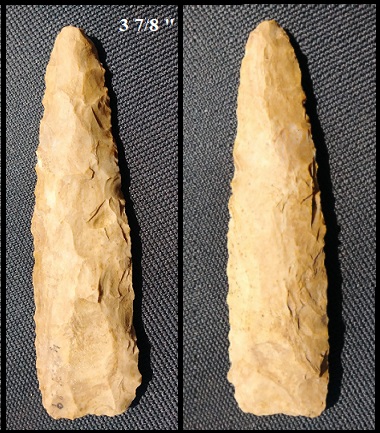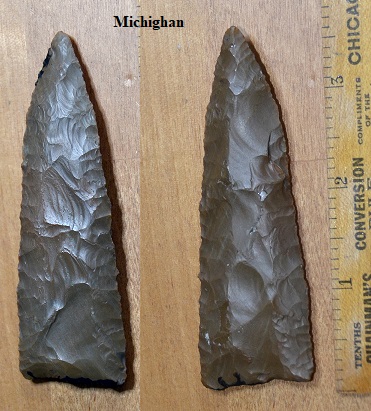Outline is Representative of Size and Shape:


Name Details:
Identified By: Gregory Perino
Named For: Type Site
Date Identified: 1985
Type Site: The Anzick Site (24PA504), Park County, Montana
Identified By: Gregory Perino
Named For: Type Site
Date Identified: 1985
Type Site: The Anzick Site (24PA504), Park County, Montana
Point Validity:
Valid type
Perino was a well-respected self-taught archaeologist who was the founder of the Illinois State Archaeological Society. This point was named in his book and has professional references to this type. This is a valid type.
Anzick Clovis
Cluster: Clovis Cluster Description of Physical Characteristics and Flaking Pattern:
This is a large triangular fluted point with a elliptical cross section. The blade is generally excurvate with the tip curving in and the edges becoming almost parallel. The base is straight with rounded basal corners. The base has a short flute in relationship to the blade. The flaking pattern may vary from random to parallel or oblique.
Size Measurements:
Commonly Utilized Material:
Additional Comments:
This is a triangular straight base variant of the Clovis point that is associated with the Anzick Site in Montana.
Perino felt that this type represents a knife more than a projectile point. This type is generally professionally referred to when discussing Clovis points from the Anzick site. This type has limited professional references outside for examples from other sites or areas.
There is great debate over the classification of Clovis style points. It is argued that the same characteristics of any single type can be seen through-out the distribution of the Clovis type and represent normal variations of the Clovis point. Others argue that specific areas specialized the type and are seen with greater frequency in those areas. Therefore, these represent later variants and unique subtypes to the Clovis point.
This is a triangular straight base variant of the Clovis point that is associated with the Anzick Site in Montana.
Perino felt that this type represents a knife more than a projectile point. This type is generally professionally referred to when discussing Clovis points from the Anzick site. This type has limited professional references outside for examples from other sites or areas.
There is great debate over the classification of Clovis style points. It is argued that the same characteristics of any single type can be seen through-out the distribution of the Clovis type and represent normal variations of the Clovis point. Others argue that specific areas specialized the type and are seen with greater frequency in those areas. Therefore, these represent later variants and unique subtypes to the Clovis point.
Distribution:

Distribution Comments:
This point is primarily found in areas associated with Anasazi sites. This point may be found on the Colorado Plateau in the southern Manti La Sal range and southward to the Su Site of New Mexico and westward to Navajo Mountain.
This point is primarily found in areas associated with Anasazi sites. This point may be found on the Colorado Plateau in the southern Manti La Sal range and southward to the Su Site of New Mexico and westward to Navajo Mountain.
Age / Periods:
Date: 15,000 - 10,000 B.P.
Cultural Period: Paleo
Glacial Period: Late Pleistocene
Culture:
Date: 15,000 - 10,000 B.P.
Cultural Period: Paleo
Glacial Period: Late Pleistocene
Culture:
Age Details:
Other points in this cluster / Related / Associated Points:
Clovis, Clovis Colby, Clovis Hazel, Clovis St. Louis, Clovis Tulare, Clovis Unfluted, Debert, Holcombe, Redstone, Ross County
Clovis, Clovis Colby, Clovis Hazel, Clovis St. Louis, Clovis Tulare, Clovis Unfluted, Debert, Holcombe, Redstone, Ross County



